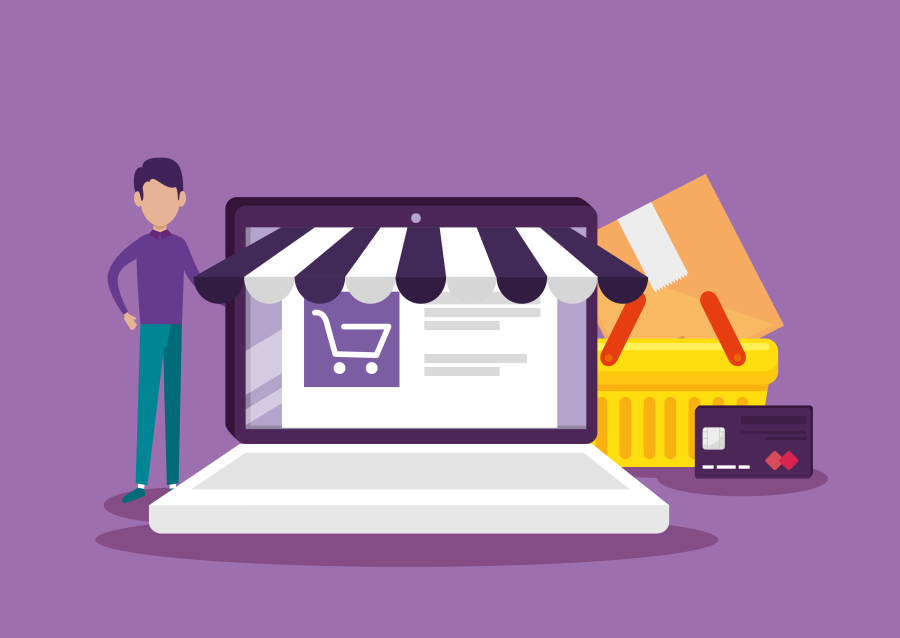How to Implement Secure Checkout for E-Commerce Websites
In the world of e-commerce, nothing matters more than trust. Customers will only complete a purchase if they feel confident that their personal and payment information is safe. As a freelance web developer, implementing a secure checkout system is not just about coding—it's about creating a trustworthy user experience that boosts conversions and protects users. On freelancerbridge, we’re diving into the key elements of building a secure, seamless, and user-friendly checkout process for modern e-commerce websites.
📘 Long Description (SEO-Optimized | ~1000 Words):
Secure checkout is the backbone of any successful e-commerce business. It’s the final gateway before a customer makes a purchase. If your checkout page lacks security features or feels suspicious, potential buyers may abandon their carts—no matter how great your products are.
As a freelance web developer, it’s crucial to understand and implement the right strategies to safeguard customer data, build trust, and encourage smooth transactions.
Below are the top strategies and practices you must follow to implement secure checkout functionality on e-commerce websites—ensuring both peace of mind for your users and credibility for your clients.
🔐 Why Secure Checkout Is Non-Negotiable
Before diving into the "how," let’s quickly explore why secure checkout is critical:
Protects sensitive information: Credit card details, personal addresses, and login credentials must be encrypted and kept safe.
Builds brand trust: Customers are more likely to purchase from websites that clearly prioritize security.
Boosts conversions: Shoppers drop off quickly if they feel a site is shady or untrustworthy.
Regulatory compliance: Payment systems must meet standards like PCI-DSS to avoid legal trouble.
Prevents fraud and chargebacks: Strong security reduces the risk of identity theft and transaction disputes.
🔑 Steps to Implement Secure Checkout for E-Commerce
🔹 1. Use HTTPS with an SSL Certificate
An SSL (Secure Sockets Layer) certificate is the foundation of secure communication on the internet.
Action Steps:
Purchase and install an SSL certificate (or get a free one via Let’s Encrypt)
Ensure your website loads via HTTPS
Redirect all HTTP pages to HTTPS
SEO Benefit: Google favors HTTPS websites in search rankings and marks HTTP sites as “Not Secure” in Chrome.
🔹 2. Integrate PCI-DSS Compliant Payment Gateways
Choose payment processors that meet PCI-DSS (Payment Card Industry Data Security Standards).
Trusted Providers:
Stripe
PayPal
Razorpay
Square
Authorize.Net
Why it matters: You offload the handling of card details to secure, tested systems—reducing your liability and technical complexity.
🔹 3. Enable Tokenization & Encryption
Tokenization replaces sensitive data (like credit card numbers) with a random string (token) that has no exploitable value.
Best Practice:
Use payment gateways that support tokenization
Encrypt all data in transit and at rest
Result: Even if data is intercepted, it can’t be misused.
🔹 4. Use Multi-Step Authentication (MFA)
Add an extra layer of verification for customer logins or high-value transactions.
Examples:
OTP (One-Time Password) via SMS/email
Biometric or app-based verification
Impact: Reduces the chance of account takeovers and fraud attempts.
🔹 5. Avoid Collecting Unnecessary Data
Only request information that is essential to complete a transaction.
Benefits:
Reduces user hesitation and form abandonment
Minimizes your data liability
Increases user trust by not overreaching
Pro Tip: Use form validation to catch mistakes and avoid errors.
🔹 6. Display Security Trust Signals
Visual cues play a huge psychological role in gaining customer confidence.
Display:
Padlock icon in the URL (via HTTPS)
SSL security seals
Payment icons (Visa, Mastercard, PayPal)
“Money-back guarantee” or “Safe checkout” labels
Why it works: Trust signals reassure users that your site is safe and legitimate.
🔹 7. Implement Real-Time Fraud Detection Tools
Smart fraud prevention tools can detect unusual behavior and flag risky transactions.
Features to Enable:
Geolocation checks
Device fingerprinting
Velocity checks (too many purchases in a short time)
AVS (Address Verification System)
Popular Tools:
Kount
Signifyd
Sift Science
🔹 8. Optimize for Mobile Security
Since many users shop via mobile, mobile-friendly checkout security is essential.
Mobile Best Practices:
Use mobile-friendly design (responsive forms and buttons)
Enable biometric payment options (Face ID, fingerprint)
Ensure secure in-app purchases if applicable
🔹 9. Monitor and Log All Transactions
Maintain a detailed log of all transactions for transparency and audit readiness.
Include:
IP addresses
Timestamps
Payment methods
User actions (e.g., password changes)
Purpose: Helps detect patterns and investigate any suspicious activity.
🔹 10. Regularly Update Software and Plugins
Outdated CMS platforms, plugins, or payment modules can expose your website to vulnerabilities.
Tips:
Use plugins from reputable sources
Enable automatic security updates if available
Schedule regular maintenance checks
Freelancer Tip: Offer “ongoing maintenance packages” to clients as an extra service.
🛒 User Experience Tips for Secure Checkout
Even the most secure checkout should be smooth and simple. Don’t scare users away with overly complex security.
Balance security with convenience by:
Enabling guest checkout
Autofilling known fields
Providing real-time error feedback
Allowing multiple secure payment options
🧠 Conclusion:
In the competitive world of e-commerce, a secure checkout process can be your secret weapon. It builds trust, boosts conversions, and protects your client’s reputation and customer data. As a freelance web developer on freelancerbridge, implementing secure checkout isn’t just a technical task—it’s a crucial value-add that shows you care about the complete user journey.


 by Emily
by Emily




